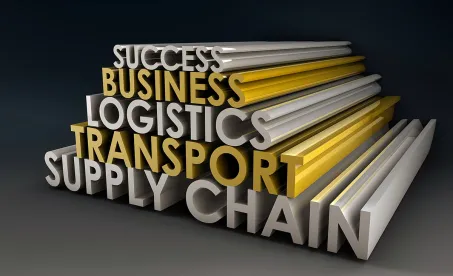To blockchain or not to blockchain; that is the question.
The world of supply chain manufacturing has seen massive disruptions: two years of the COVID pandemic; geopolitical unrest; limited availability of raw materials; disruption of the transportation of goods; shortages of workers; plus increased theft and fraud. A variety of high-tech solutions to improve the supply chain and reduce theft and fraud have been tested and implemented with different degrees of success.
One high-tech solution to this problem involves the use of blockchains and smart contracts. Blockchains are distributed ledgers typically used with cryptocurrency applications because of their ultra-high security performing financial transactions through the use of automated transaction consensus verification. With supply chain management such consensus processing is not “mission critical” as there are other reliability safety measures, such as encrypted communications, verifiable RFID markings, multi-step authentication protocols for users, and so on.
Blockchains provide several practical and legal advantages over conventional supply chain tracking. Every supply chain participant, from the raw material producer to the final product manufacturer, and even the end buyer may access the blockchain for product supply chain tracking, allowing better coordination along the entire chain.
Smart contracts are programs stored on a blockchain that execute when conditions are met. The conditions are typically a set of negotiated terms between two parties stored in a data object, and are automatically executed when a transaction or other event condition occurs. Smart contracts can be used for the manufacturing of physical goods in an integrated manner. For example, in producing a garment, such as jeans, raw materials may be contracted from suppliers, and each supplier may log and record their operations, which may trigger a smart contract. Once these conditions are met, the product is automatically shipped and payments are processed. Authentication can be set up so the smart contract can automate payments. By allowing the suppliers, sellers and/or buyers to create conditions in which one step in the process won’t be fulfilled until the one before it has been verified, there is less room for fraud, disputes over obligations and performance and removes the need for a third party/middle-man, such as an escrow agent. Such autonomy may lower business and legal costs to help keep budgets on track.
How do smart contracts work where multiple layers and multiple parallel processes of production are required? Not all blockchains and smart contracts are created equal. Ethereum is a blockchain platform most known for cryptocurrencies and non-fungible tokens (NFTs). The Ethereum blockchain is enormous, currently over four terabytes and doubling yearly, making it impractical for many applications. Other blockchain platforms may be tailored for supply chain uses, but many are limited to the use of a single smart contract per transaction.
There’s a blockchain platform that supports sequential smart contracts; multiple levels of contractors may be compensated, for example, upstream of one another. In the garment example, once a smart contract is satisfied by the raw material producer, payment may be made to that producer and a down payment may be made to the fabric production facility automatically by the first smart contract being successfully completed. As the smart contracts along the supply chain are satisfied, the end buyer has a transparent view of the supply chain. Each step may be coded, verified, and time stamped along with any other information (e.g., truck ID, personnel IDs, etc.) to provide end-to-end traceability, thereby avoiding fraud and theft.
EvergreeNFT is a blockchain solution that supports sequential smart contracts for supply chains. EvergreeNFT President Andrew Hopkins stated that “although other solutions exist for the supply chain industry, none are as elegant and simple to use as blockchains. Our solution supports sequential smart contracts and can incorporate any encryption protocol desired by a customer for security purposes. Moreover, because of the inherent redundancy of blockchains, the potential of cyber-ransom or other cybercrimes to become a disruption for our supply chain system is eliminated.”
Other smart contract uses include pattern owners licensing to a licensee with rights to sub-license. Payments are then made in a sequential, automatic manner because of the nature of the smart contracts. Another smart contract use allows limiting production of a pattern, such as a tee-shirt, by the smart contract preventing a printer from printing more than a certain number of prints (e.g., 200 tee-shirts).
Blockchains have become a valuable supply chain tool for manufacturing scheduling, reducing fraud, maximizing security, managing budgets, and reducing legal conflicts. Blockchains with sequential smart contracts further support supply chains in ways that have historically been time consuming and logistically challenging.




 />i
/>i

